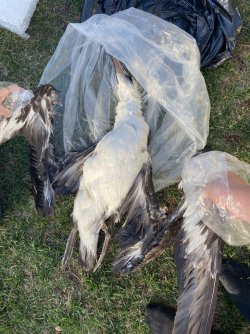Background story:
My mom is an ornithologist who works for a museum. She if a field biologist specializing in small birds such as gnatcatchers, sparrows, and thrashers. Basically, she is trained a lil bit in exotic vet area…she will take care of any bird injured or anything. She is also on call for any injured or dead bird that needs to be picked.
Today, while doing her normal bird surveys, she got a call from the museum relaying information that a Laysons Albatross has died. These birds are extremely rare in California, let alone the coast. Over the decades, the museum has only 3 records of Albatross in general taken from the Southern California coast. This one has a band from Guadalupe, either Mexico or Guadalupe island. The number to call went to an island called the Turks and Caicos right above the Dominican Republic, close to Guadalupe island. However, it is most likely from Guadalupe, Mexico, where there is a breeding colony. It was also banded furthur up the coast of Mexico.
My mom is an ornithologist who works for a museum. She if a field biologist specializing in small birds such as gnatcatchers, sparrows, and thrashers. Basically, she is trained a lil bit in exotic vet area…she will take care of any bird injured or anything. She is also on call for any injured or dead bird that needs to be picked.
Today, while doing her normal bird surveys, she got a call from the museum relaying information that a Laysons Albatross has died. These birds are extremely rare in California, let alone the coast. Over the decades, the museum has only 3 records of Albatross in general taken from the Southern California coast. This one has a band from Guadalupe, either Mexico or Guadalupe island. The number to call went to an island called the Turks and Caicos right above the Dominican Republic, close to Guadalupe island. However, it is most likely from Guadalupe, Mexico, where there is a breeding colony. It was also banded furthur up the coast of Mexico.



